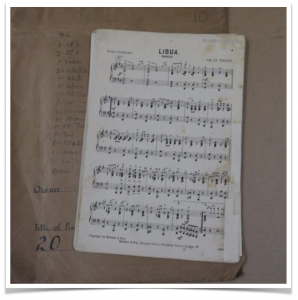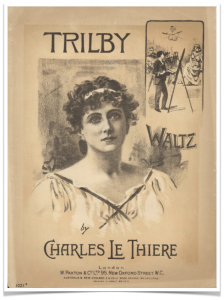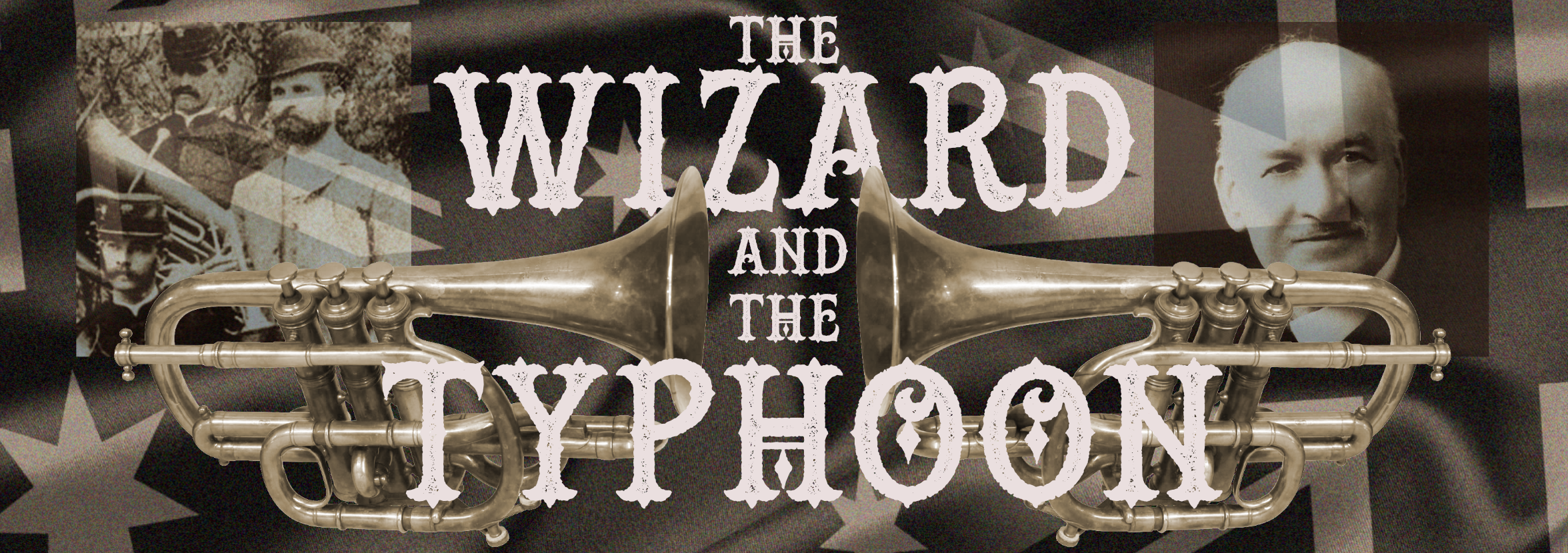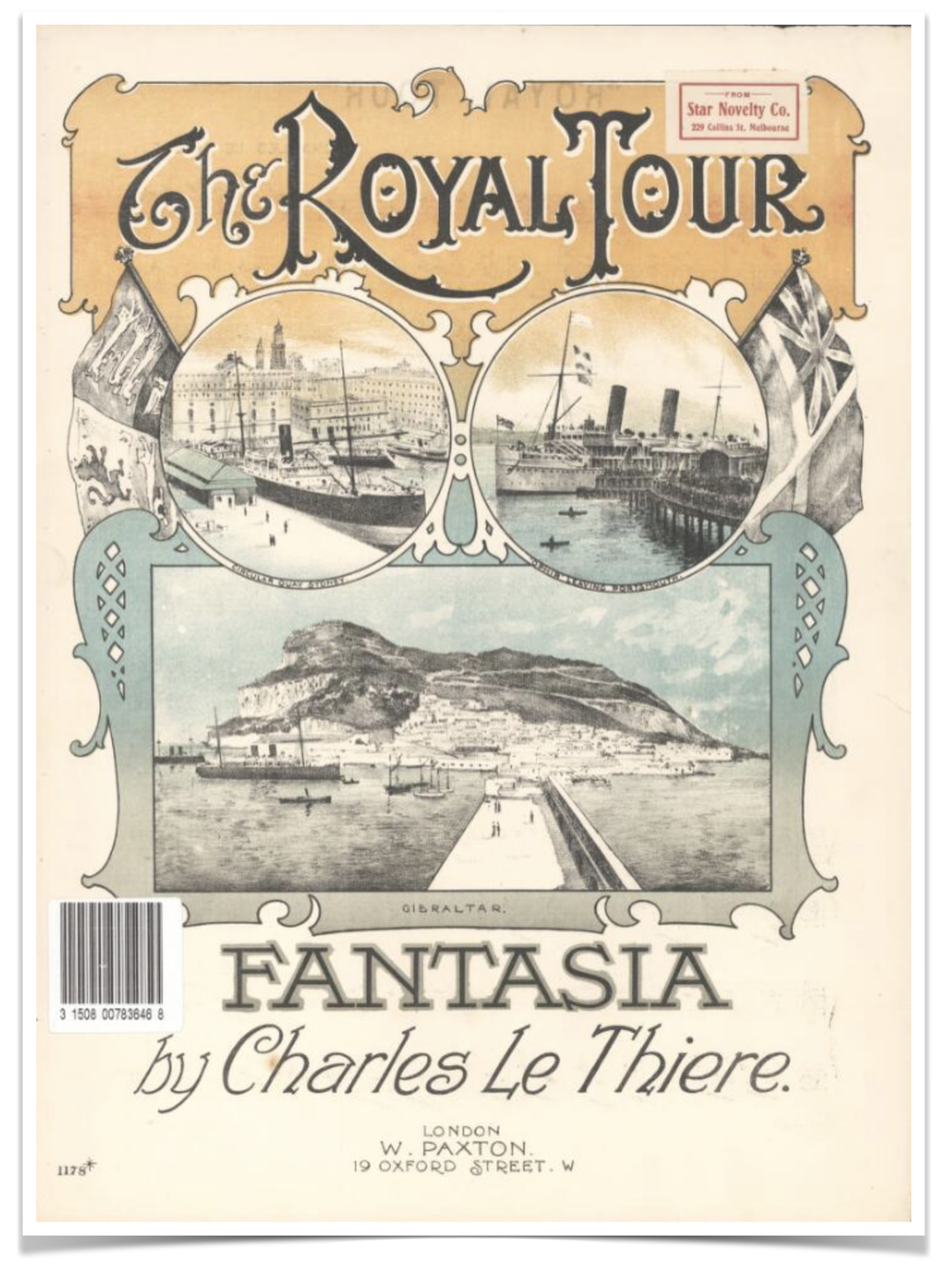 T E Bulch was not Charles Le Thiere.
T E Bulch was not Charles Le Thiere.
As with Carl Volti, Charles Le Thiere is a composer’s pseudonym, but on this occasion we find it was for a Mr. Thomas Wilby Tomkins. This was initially revealed to me via a Wikipedia entry, but as Wikipedia also claims T. E Bulch to be Charles Le Thiere I thought it wise to dig a little deeper into the story.
Thomas Wilby Tomkins was born in the Islington area of London in late 1859. We don’t have an exact year for his death, but we do know he lived until at least 1935. He would certainly have been a contemporary of Thomas Edward Bulch.
Thomas Wilby Tomkins’s father, also called Thomas, was a goldsmith, resident with his wife Eliza at Denmark Terrace in 1861. Coincidentally, though arguably of little relevance here, Denmark Terrace was also the childhood home of Ray Davies of The Kinks
There are few details of the young life of Thomas, and there is no documented explanation as to why he adopted the pseudonym Charles Le Thiere; though we can perhaps assume that as with those used by Tom Bulch, and Archibald Milligan (Carl Volti) he, as Milligan explained to the press of his day, similarly found that sales of his music improved when using a more exotic name.
On December 22nd 1878 Charles, then also working as a jeweller, married Ada Jackson, the daughter of a Silversmith, at the Holy Trinity church in Islington.
Within 3 years, at the time of the next census, Thomas, his wife Ada and their two daughters Ada and Marie Louise were boarding with an Egerton family at Warden Road, Cheltenham. Thomas is listed as a jeweller/musician. This seems to be the beginning of a transition in the mind of the, then, twenty two year old Thomas as to what he was. After this point records no longer make mention of his being a jeweller.
Where did music enter his life? One clue may come from a newspaper article in The Era in 1895 where we learn a little more about Le Thiere. “VIRTO, the versatile instrumentalist, has lighted on a successful new song, “The King of the Military Band,” which is from the pen of Mr Charles Le Thiere, who was with Virto, at one time, a member of the Grenadier Guards band.” If this is correct, and not a clever marketing message, then Thomas Tomkins was a military bandsman for a time, which certainly would account for how he came to understand band music and the band format. Thomas would have been a bandsman in the Grenadier Guards at some time between 1856 and 1896 while the bandmaster there would have been Dan Godfrey, son of the renowned military bandmaster of the Coldstream Guards, and respected Victorian composer, Charles Godfrey.
Though most of his published compositions were for individual instruments or duets, Tomkins was certainly capable of understanding, and composing, full band arrangements. He appears to have known sufficient to be respected and trusted enough to be considered a band contest adjudicator in his day. According to the Uxbridge and West Drayton Gazette of 5 July 1890 Charles Le Thiere was one of two judges at a Fete, Military Tournament and Band Contest at Uxbridge the previous week.
There are examples published also of instances where he acted as a conductor. The Era, of 7 December 1889, names Charles Le Thiere as the conductor of the orchestra at a play at The Novelty Theatre entitled “The Spy: A story of the American Rebellion”. The critic does not appreciate the play but refers to the orchestra as “a capital little orchestra.”
At the time of the 1901 census, a curious anomaly occurs. Thomas Tomkins’s wife Ada is shown as living at De Beauvoir Road in Hackney; but has changed her name to Ada Le There and is living with daughters Christine, Louisa and Enid aged 16, 14 and 12. She is working as a dressmaker based at home. What’s odd is that she has adopted the surname of Thomas Tomkins’s pseudonym. There is no sign of Thomas himself being resident at this address. This continues to the 1911 census wherein she is shown as living with Christine, still, at 8 Tassell Road, Dalston working as a sewing machinist. This time the census claims she is a widow, yet we know that Thomas Wilby Tomkins is still alive.
Clues as to why may be found in biographical material available. Le Thière is described by Henry Macaulay-Fitzgibbon (1855-1942) in his book “The Story of the Flute” (1913) as an extraordinary piccolo player, who also played the flute with lesser success. In another book “First Flute” (1968) by Gerald Jackson a different portrait is revealed; one of a musician without a permanent position who composed or arranged to feed his drinking habits.
He seems to have had genuine ability musically and as a composer, however, creating pieces like “L’oiseau du Bois” and “Danse des Satyrs” for piccolo. He also created “The Royal Tour”, “Sunrise on the Mountains” and “Village Life in the Olden Times” as well as many others as seen here on Wikipedia. In his time his work was published by John Alvey Turney (London), Francis & Day (London), James S Kerr (Glasgow), W Paxton (London) and E W Cole (Melbourne), John E Dallas (London), Lafleur & Son (London), Boosey & Co. (London), Riviere & Hawkes (London), among others. We also see in 1920 that “Dreams of the past” by Charles Le Thiere was arranged by Carl Volti for a book published by J S Kerr of Glasgow. (see the article on Carl Volti – another mistaken pseudonym of Thomas Bulch). This suggests significant appetite for his musical compositions.

Nonetheless the sad depiction of Thomas Tomkins as something of a gifted waster, perpetually flirting with destitution seems to be borne out by the documented evidence I have found.
The Islington Gazette of 2 Sept 1907 tells a sorry tale “BORROWED THE CORNET. Thomas Wilby Tomkins, 48, musician, giving an address at common lodging-house Westminster, was charged with stealing a cornet, worth £4, belonging to Mr. Samuel Prior, The prosecutor said had known the prisoner (or the past 25 years. He had been a musician of note, known under a nom de plums all over the world. But he had got into poor circumstances, and he (prosecutor) had given him room in his boots to sleep in. On the 24th ult. the prisoner disappeared and so did the comet, and the latter was subsequently found pawned. The prisoner admitted taking the cornet to meet temporary necessities; and thought be would have been able replace it In its case without its absence being detected. He pleaded guilty, and was sent gaol for seven days.”
In June 1908 his daughter Marie Louise married, at the parish church of St Mark, Dalston, to William West Benson, a buyer; then in 1910 his other daughter Enid Sybil married Percy Swift Mason at St Bartholomew’s Church Dalston, London. Thomas was named as the father on the marriage certificates, as Tomkins, not Le Thiere. Whether he was invited to, or attended, the weddings is something we don’t know.
On Feb 20th 1918, according to an archivist at the Royal Northern College of Music (Manchester) documented evidence showed that Charles Le Thiere wrote an assignation of rights to all his compositions to that date to a Clarence Dewhirst; having previously on the 7th Feb assigned the rights for the piccolo piece “Sure to Please”. This may have been out of a desperate need to acquire money, though there is something unusual about it in that the address recorded for Le Thiere is 26 Tonman Street, Deansgate, Manchester. Looking at Tomkins’ history it’s not an area we’d associate with him.
Clarence Tyson Dewhirst was born in 1866 in Manchester, the son of a glass stainer who resided with his own father, a book shop keeper, in the Deansgate area of the city. Clarence learned the art of glass staining from his father and was by the age of 14 in the same occupation at the family shop of 195 Princess Street, Manchester. By 1891 the premises at 195-197 Princess Street was in the hands of Clarence’s father, but Clarence himself declared his occupation to be that of musician, not glass stainer, then by 1901 he is married to Elizabeth and the family have their own licensed grocer’s shop at 76 Dickenson Road, Rusholme, Manchester. Clarence Dewhirst seems to have a stable life, and being the owner of a business would also be a man of some means. Perhaps the two, being flautists, has played together in the past and Clarence was a person of a type that Thomas Tomkins felt he might reach out to if in need. Tonman Street and Princess Street are quite close, but Dickenson Road is some distance away. How Tomkins ended up in Manchester we don’t know and the reasons for the deal are equally obscured by time.
If Tomkins had indeed travelled to Manchester, he certainly seems to have returned to London. In Oct 1920 he was admitted to he Westminster Union Workhouse as infirm; and again in 1921. In 1922 Tomkins aged about 62 (occupation given as ‘musician’) was twice taken in to the City Of Westminster Poor Law Union Workhouse – in March for 2 months and then, again, in August for 2 months.
From there we lose track of Thomas Tomkins for a while. The same music archivist mentioned above also tells us of an undated letter in which his address is given as ‘care of’ Potter & Co, 36-38 West Street, Charing X [Cross], London WC2. In it ‘Le Thiere’ mentions he is 70 and in the workhouse. His age would suggest the letter to be from around 1930-31.
Next is this piece in the Daily Herald of Sat 31st August 1935 “OLD COMPOSER IN INSTITUTION – MUSICIANS TRYING TO GET HIM OUT – Seventy-four-year-old Thomas Wilby Tomkins, at one time a musical composer under the name of Charles Le Thiere, is an inmate of Brighton Institution. This was revealed at Brighton police court yesterday, when an attendant at the institution, Alfred James Fern, was remanded on a charge of stealing a £12 7s. cheque for royalties that had been sent to Tomkins by the Performing Rights Society. “Charles Le Thiere did great deal of composing in his day,” said an official of the society yesterday.” His works are still performed to some extent. They consist principally of orchestral, military, and brass band pieces, and include ‘Our Regiment,’ ‘Gypsy Life,’ ‘ Clear the Road,’ and ‘ Silver Birds’ We only heard a few days ago that he was in the institution, and our Benevolent Fund Committee doing its best to arrange for him to leave.”
The Sunderland Daily Echo and Shipping Gazette records the excuse made by the thief. “DID NOT GET CHEQUE Reference to a 74-year-old composer, who is an inmate of Brighton Institution, was made at Brighton when Alfred James Fenn (31), attendant at the institution, was remanded on a charge of stealing a cheque worth £l2 7s belonging to Thomas Willby Tomkins. Detective-Inspector Felling said Mr Tomkins was once a composer in the name of Charles le Thiere. For the past 20 years he had been receiving royalties from the Performing Right Society. He did not receive a cheque for £l2 7s which was in a letter initialled by Fenn. Fenn told the court he was very sorry, and added: “I had one or two debts, and could not see my way clear to settling them.””
I’ve not been able to find a date for the death of Thomas Wilby Tomkins, though it’s probably a safe assumption that he died in poverty some time after that incident in 1935.
How, then may we have been led to believe that Thomas Bulch was Charles Le Thiere? We, as others most probably, have seen at least one case where pieces by both T. E. Bulch and Charles Le Thiere feature. An example being the the same compiled book of piano music published by J S Kerr of Glasgow mentioned in the article on Carl Volti (with the compositions also listed). We know also that “Dreams of the Past’ by Charles Le Thiere is published as a brass band arrangement by Lyons of Melbourne which had the music printed by C G Röder of Leipzig just like much of Bulch’s work. It is quite probable that T. E. Bulch may have arranged this piece on an unnamed/uncredited basis, as we believe he often did. Yet the mystery deepens here as this was also the piece arranged for piano and violin by Carl Volti (Archibald Milligan) in the J S Kerr compilation “Kerr’s collection of latest dance music. Book VIII” and we know for sure that T. E. Bulch was not, after all, Carl Volti.
At this point in time we also don’t know what, if anything, Clarence Dewhirst did with the rights to Le Thiere’s compositions. We saw from the articles above that Tomkins continued to receive royalty cheques for his work. Were these only for works composed after 1918 when the rights were signed over, or was there more to this than meets the eye?
There is one more twist, through pure coincidence. T. E Bulch’s grandson, our group’s Australian Patron, also has the surname Tomkins. Had Thomas Wilby Tomkins composed and had work published under his actual surname it might have been a more logical misunderstanding to arrive at knowing how Tom Bulch enjoyed wordplay and using family names.
In any case, T. E Bulch may possibly have arranged Le Thiere’s work, but was definitely not the true identity of Charles Le Thiere.


what is the Revealing for?
The purpose of the ‘Revealing” is that there is a misconception published in several places elsewhere that the names in the articles were actually names used by Thomas Edward Bulch, whereas in truth our research has shown they were genuinely other people, all composers active in other places at the same time as Thomas Edward Bulch – though in some cases he may have arranged or been involved in the publishing of their work. We’re simply bringing a more accurate account to the fore. Good question though. Made me think for a moment.
We’re looking through early editions where Bulch and Le Thiere appear together. I wonder if Bulch simply appropriated the name so that there are really TWO le Thiere.